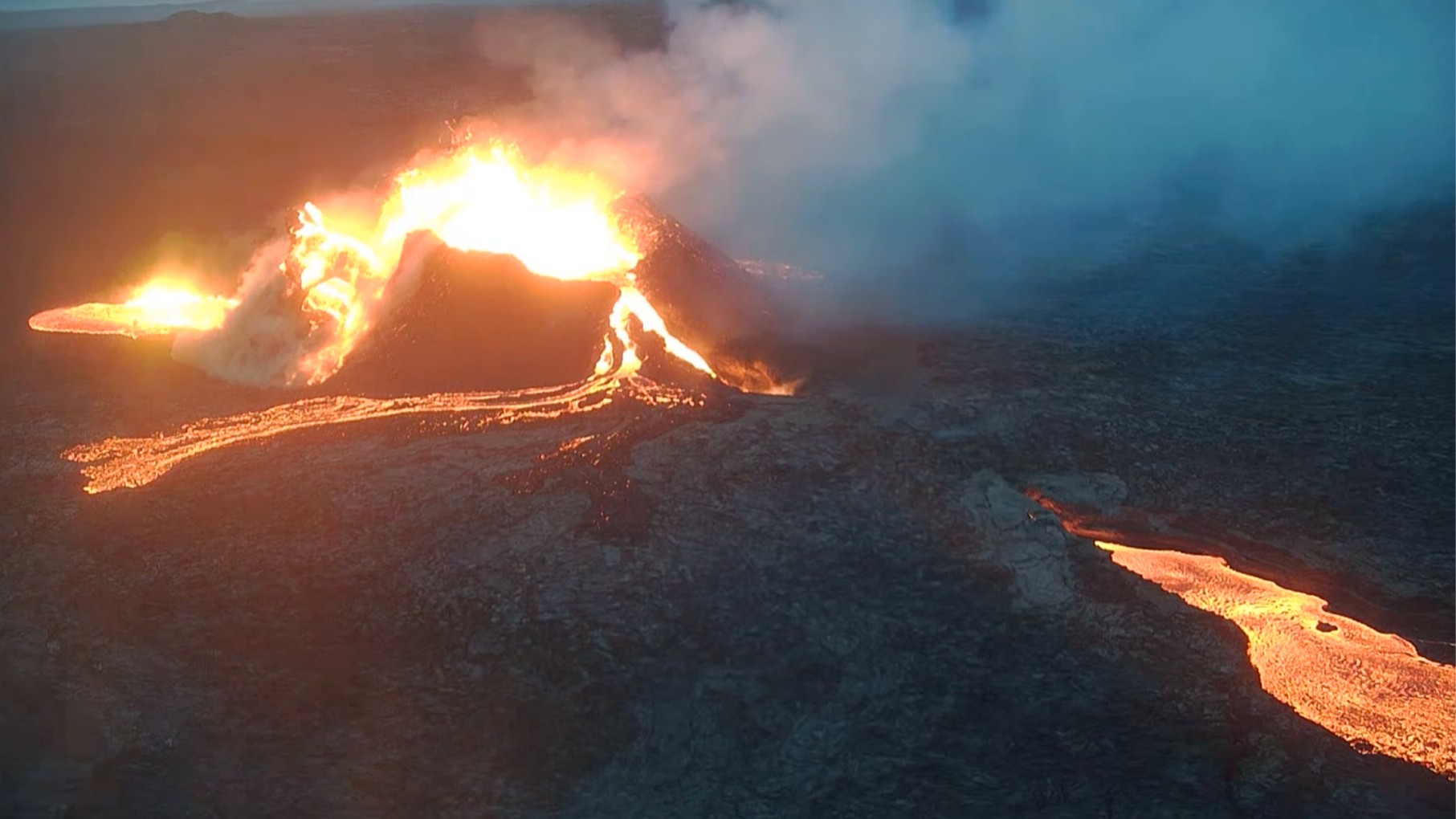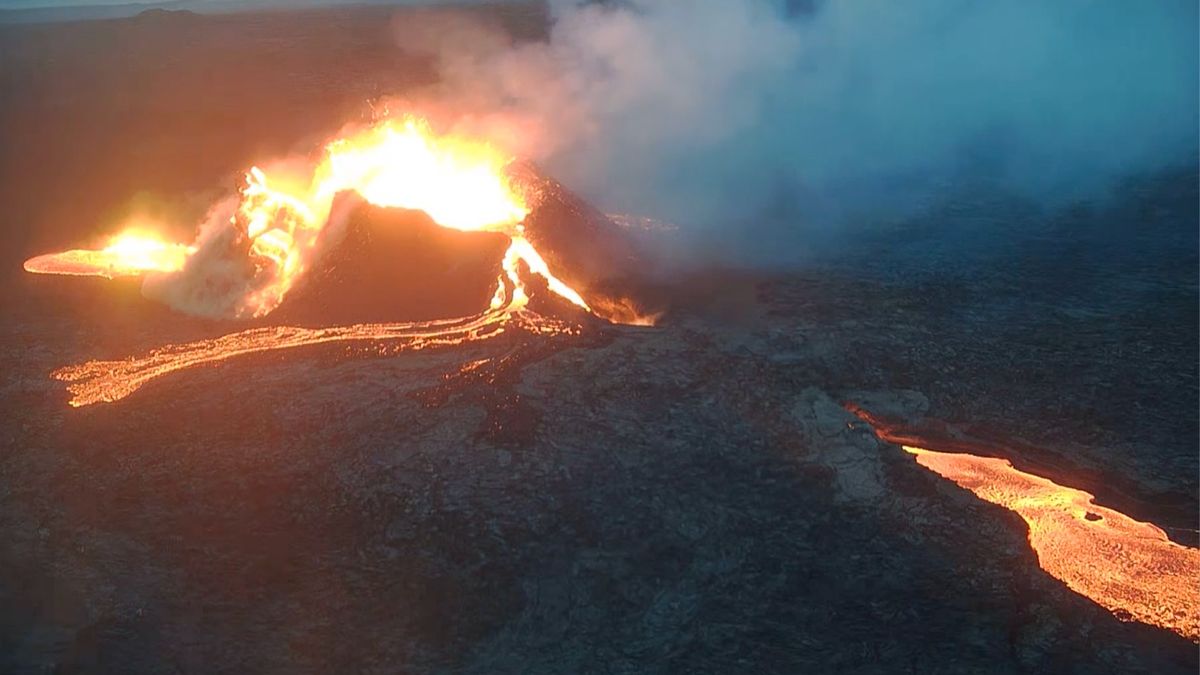
In Iceland, the world’s newest “baby” volcano is throwing a temper tantrum: It’s overflowing and spewing “spatter bombs,” or blobs of molten lava, into the surrounding crater.
The volcano formed on July 10, when an underground eruption opened a 1.7-mile-long (2.7 kilometers) fissure in the ground of Iceland’s Reykjanes peninsula, southwest of the capital, Reykjavík. Leading up to this event, the region experienced a “seismic swarm,” during which more than 7,000 earthquakes shook the area starting on July 4, according to a statement from the Icelandic Met Office. Lava trickled from the fracture in the ground, and seismic activity decreased for about a week after the eruption.
Related: The 12 biggest volcanic eruptions in recorded history
On July 18, however, “there was a major shift in the vent activity overnight,” according to a post on the Facebook page of Rannsóknarstofa í eldfjallafræði og náttúruvá (the Laboratory of Volcanology and Natural Hazards), a research group from the University of Iceland. At around 11:30 p.m. local time, “the crater filled up to the brim with lava and the fountaining began to throw spatter bombs well beyond the crater rims.” Roughly three hours later, a small opening formed, allowing lava to spill over the crater, the post added. By early morning, a section of the crater’s rim had collapsed, releasing a river of lava to the north and west. The lava pouring from this crater is roughly 2,192 degrees Fahrenheit (1,200 degrees Celsius), the scientists said.
“The crater became unstable and collapsed,” Ingibjörg Jónsdóttir, an associate professor of geography at the University of Iceland and member of the lab, told Live Science in an email. “It had built up quite fast and it was filling up with lava on the inside, causing pressure to the walls. Not unusual as such but spectacular and of concern since there were people quite close by not long before it happened (in a closed area though).”
On the opposite side of the volcano, lava flowing south stalled and eventually crusted over, the post said. The area around the eruption site is uninhabited, and the eruption does not currently post a risk to infrastructure, according to the Icelandic Met Office. Firefighters in Grindavík, a nearby Icelandic town, have already contained the potential spread of fire from July 18’s lava spill, and they no longer believe it is a threat, according to the Icelandic National Broadcasting Service.
Scientists will continue to monitor the volcano’s behavior because future lava flows could ignite wildfires and reduce air quality in the region, according to the statement. Watch a livestream of the volcano on the Icelandic National Broadcasting Service’s website here.
Stay connected with us on social media platform for instant update click here to join our Twitter, & Facebook
We are now on Telegram. Click here to join our channel (@TechiUpdate) and stay updated with the latest Technology headlines.
For all the latest For Top Stories News Click Here

